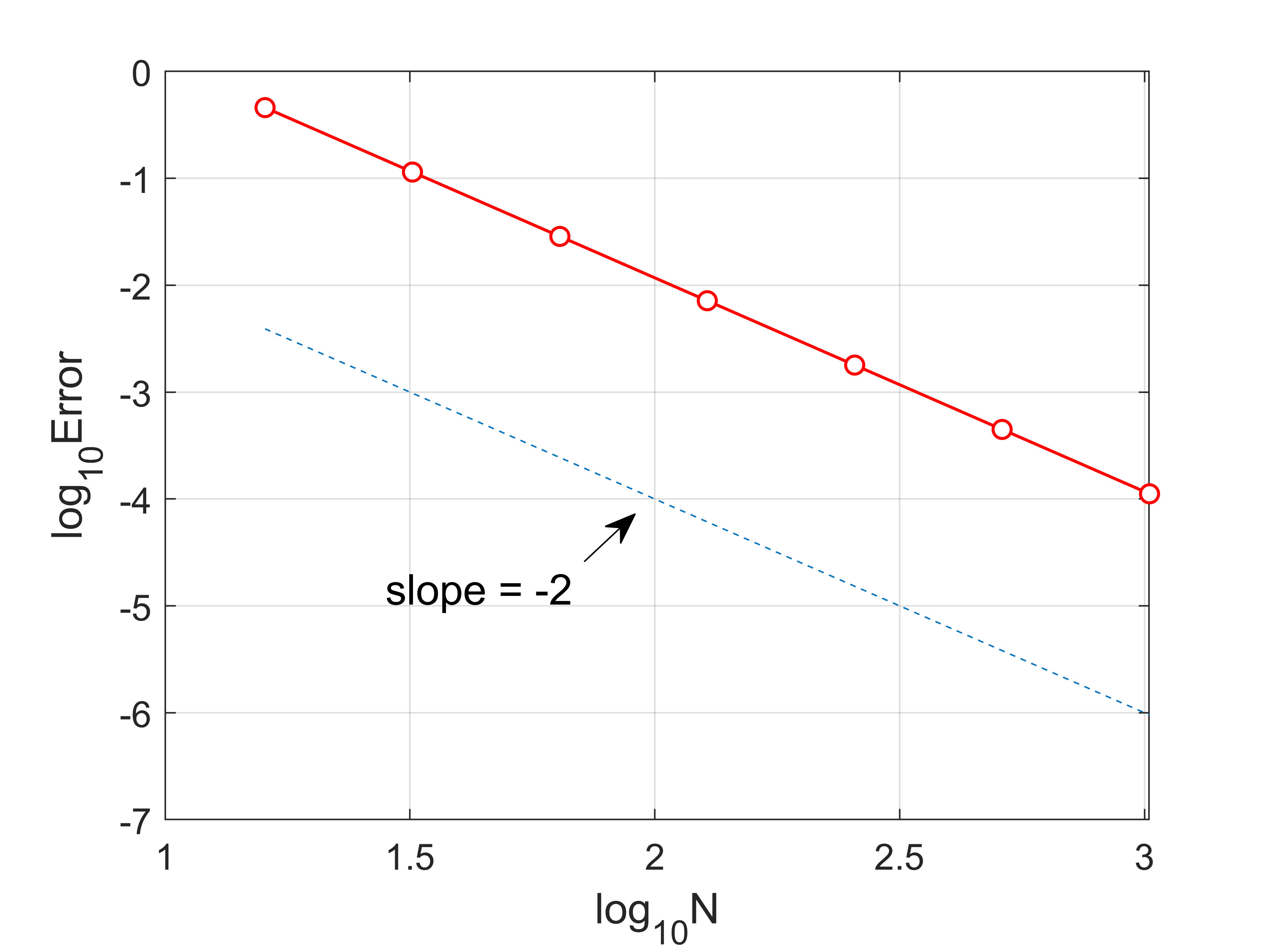1
2
3
4
5
6
7
8
9
10
11
12
13
14
15
16
17
18
19
20
21
22
23
24
25
26
27
28
29
30
31
32
33
34
35
36
37
38
39
40
41
42
43
44
45
46
47
48
49
50
51
52
53
54
55
56
57
58
59
|
clear all; close all;
Nvec=2.^[2:7];
Error=[];
for N=Nvec
h1=pi/N; h2=1/N;
x=[0:h1:pi]';
y=[0:h2:1]';
[X,Y]=meshgrid(x,y);
X1=X(2:N,2:N);
Y1=Y(2:N,2:N);
f=cos(3*X1).*sin(pi*Y1);
e=ones(N-1,1);
C=diag([1/h1^2+2/h2^2, (2/h1^2+2/h2^2)*ones(1,N-3), 1/h1^2+2/h2^2])...
-1/h1^2*diag(ones(N-2,1),1)-1/h1^2*diag(ones(N-2,1),-1);
D=-1/h2^2*eye(N-1);
A=kron(eye(N-1),C)+kron(spdiags([e e],[-1 1],N-1,N-1),D);
f=f';
u=zeros(N+1,N+1);
u(2:N,2:N)=reshape(A\f(:),N-1,N-1)';
u(:,1)=u(:,2);
u(:,end)=u(:,end-1);
ue=1/(9+pi^2)*(cos(3*X)).*(sin(pi*Y));
error=max(max(abs(u-ue)));
Error=[Error,error];
end
plot(log10(Nvec),log10(Error),'ro-','MarkerFaceColor','w','LineWidth',1)
hold on
plot(log10(Nvec), log10(Nvec.^(-1)), '--')
grid on
set(gca,'fontsize',14)
xlabel('log_{10}N','fontsize', 14), ylabel('log_{10}Error','fontsize',14),
ax = [0.64 0.60];
ay = [0.69 0.64];
annotation('textarrow',ax,ay,'String','slope = -1 ','fontsize',14)
for i=1:length(Nvec)-1
order(i)=-log(Error(i)/Error(i+1))/(log(Nvec(i)/Nvec(i+1)));
end
Error
order
|


